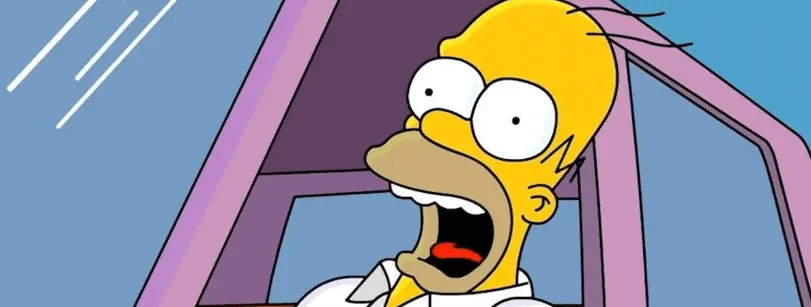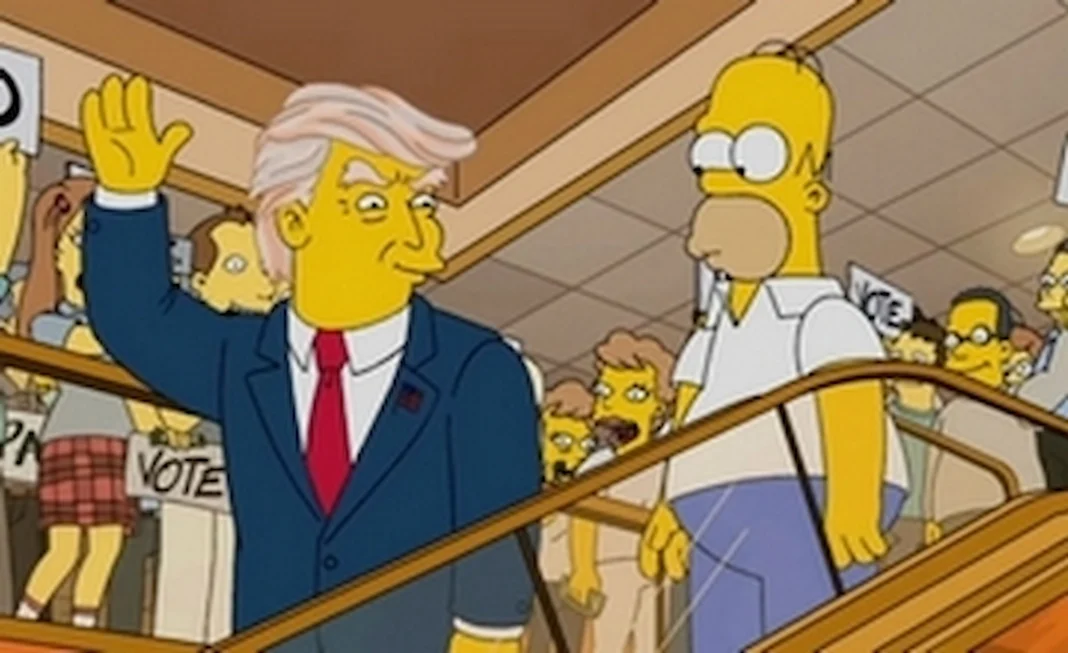It’s that strange sensation again, where fiction, we suspect, morphs into reality. You’ve heard the murmurs; it’s the curious case of “The Simpsons,” the iconic animated series that has been serenading our television screens since 1989, for over 700 mesmerizing episodes. The lovable yellow-skinned family has entertained us, made us laugh, made us weep, and most intriguingly, made us question our very existence in an unnervingly prophetic manner. Are we merely living in a world meticulously scripted by Matthew Groening and his ingenious team?
Let’s stride boldly into this twilight zone, where animated series predictions are brushed against the canvas of reality.
Consider the peculiar instance of “virtual food.” In an episode from the 90s, our beloved characters, Homer and Marge, are seen indulging in holographic munchies. A whimsical moment or a subtle hint towards the emerging metaverse? The thought is as tantalizing as a Krusty Burger. Groening seems to be handing us the blueprints for our gastronomical future. Is he perhaps suggesting that the Instagrammable avocado toasts of today could metamorphose into a digital feast tomorrow?

Now, shift your attention to the gun-laden United States.
The contentious debate around firearm regulations rages on, fueled by heartrending incidents of violence plaguing schools and public gatherings. Lo and behold, the creators of “The Simpsons” have already envisioned a world where weaponry is banished.
Was this merely an animated plot, or a meticulously designed forecast predicting a peaceful future for the American society?
As the State of California recently signed a federal ordinance outlawing large-capacity ammunition magazines, one can’t help but feel an uncanny sense of déjà vu.
Then we have the futuristic prospect of flying cars, another sci-fi concept illustrated decades ago by “The Simpsons.” Are they mirroring reality, or have they already seen tomorrow?
When “Jetson One” announces their personal electric aerial vehicle hitting the market in 2022, it’s hard not to recall a 2005 episode, “Future drama,” featuring a flying car.
Groening’s yellow-skinned seers have also shed light on another distressing possibility: a re-epidemic of coronavirus. As we began to breathe easy, the Omicron variant took center stage, creating ripples of panic worldwide. Could the global quarantine foretold in an episode of “The Simpsons” become our reality once more?
We shudder at the thought.

Let’s traverse to a more exhilarating realm: Mars. Lisa Simpson, in her boundless curiosity, once embarked on a journey to the Red Planet.
Sounds familiar?
Yes, Elon Musk’s ambitious SpaceX project reflects the same.
Does Groening and his team hold a crystal ball reflecting our celestial aspirations?
Turn your gaze now towards the political sphere, where the vibrant Ivanka Trump emerges.
The series speculated her ascent to the seat of the President of the United States.
Is it another play of clairvoyance?
Could Ivanka indeed become her father’s running mate in 2024, just as “The Simpsons” had predicted?
Matthew Groening’s contribution to animation and entertainment is unparalleled, but the question remains: Is he a mere storyteller or a master of augury?
As we delve deeper into the strange parallels between “The Simpsons” and our reality, it’s hard to brush aside the overwhelming sense of intrigue.
The beauty of this enigma lies in its eternal ambiguity, teasing us with tantalizing possibilities.
Perhaps the Simpsons’ Springfield isn’t a fictional universe after all, but a looking glass into our own.
Welcome to the eerie world of predictive cartoons, my friends.
Be ready to be amazed, startled, and downright flabbergasted as we explore the limits of our reality. Is Groening merely an animator, or is he the puppet master of our lives?
Only time will tell. Until then, we will continue to watch, wonder, and question the uncanny predictions of “The Simpsons.”





